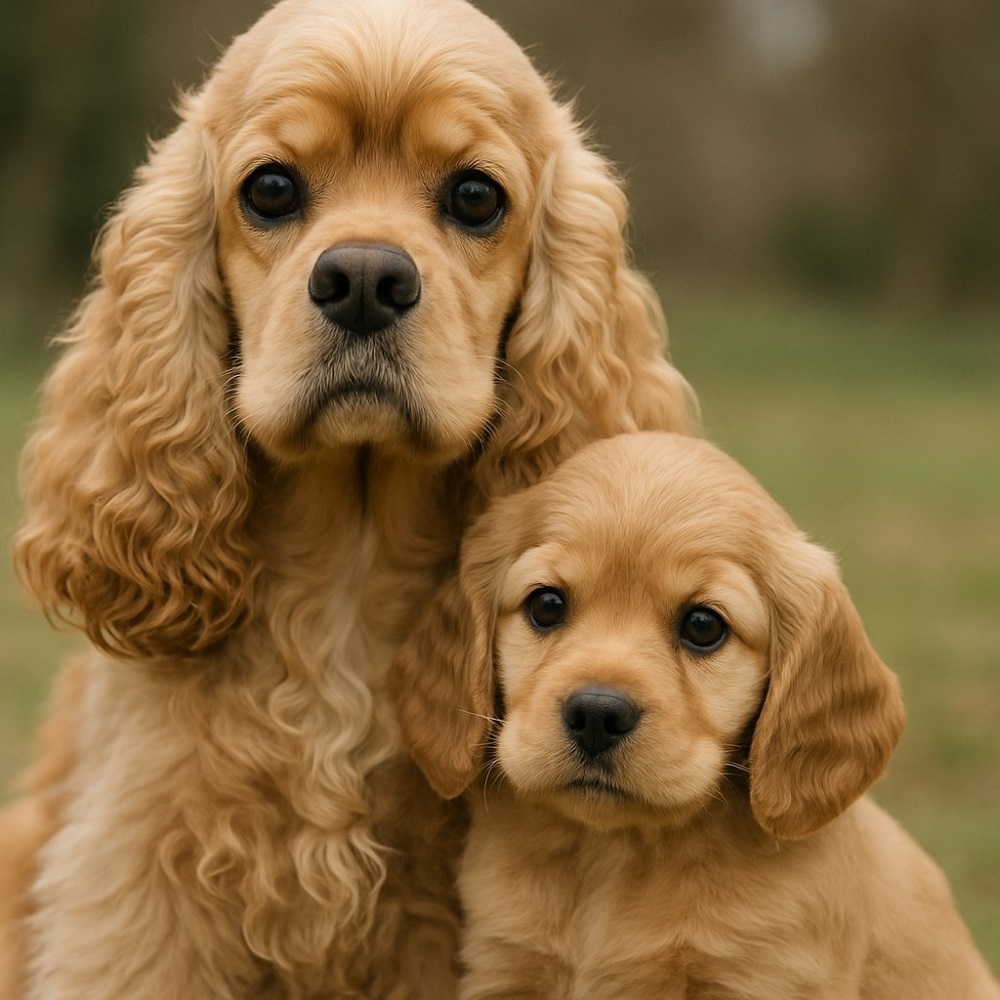The American Cocker Spaniel
The American Cocker Spaniel is a popular and beloved dog breed, renowned for its beautiful appearance and characteristically cheerful, "merry" disposition. It holds the distinction of being the smallest member of the Sporting Group as recognized by the American Kennel Club (AKC).

Here's a breakdown of key aspects:
- Origin and History: Though descended from English Cocker Spaniels brought to North America, the American Cocker Spaniel was developed as a distinct breed in the United States during the late 19th and early 20th centuries. American breeders favoured a slightly different look – smaller size, a more rounded head shape, and a more profuse coat – leading to its formal separation from the English Cocker Spaniel by kennel clubs in the 1940s. They were originally bred to flush out and retrieve small game, particularly American woodcock.
- Appearance:
- Size: Compact and sturdy, they are the smallest of the sporting spaniels.
- Head: They have a distinctive, refined, and elegantly rounded head with a pronounced stop (the transition from forehead to muzzle).
- Eyes: Large, dark, and expressive, giving them a soft, appealing, almost soulful look.
- Ears: Long, low-set, and covered in abundant, silky feathering – one of their most recognizable features.
- Coat: Luxurious, silky, and flat or slightly wavy. They have significant feathering on their ears, chest, abdomen, and legs. Coats require substantial grooming.
- Colours: They come in a variety of colours, categorized typically as Black, ASCOB (Any Solid Color Other than Black - including buff, red, chocolate), and Parti-color (two or more solid colours, one of which must be white, like black and white, or red and white).
- Tail: Traditionally docked, but this is becoming less common and is restricted or banned in many countries/regions. An undocked tail is feathered and carried merrily.
- Temperament:
- Generally known for being gentle, affectionate, cheerful, and eager to please. They thrive on human companionship and enjoy being part of family activities.
- Usually good with children and other pets if properly socialized from a young age.
- They can be quite sensitive and respond best to positive, gentle training methods. Harsh corrections can make them anxious or fearful.
- While intelligent, they can sometimes have a stubborn streak.
- Poor breeding or lack of socialization can sometimes lead to nervousness, excessive barking, or submissive urination.
- Exercise and Training:
- They have moderate energy levels. Daily walks, playtime in a secure area, and mental stimulation are usually sufficient to keep them happy and healthy.
- Early socialization and obedience training are crucial for developing a well-adjusted companion.
- Grooming:
- This is a high-maintenance breed in terms of grooming. Their beautiful coat mats easily and requires frequent brushing (ideally daily, or at least several times a week).
- Most pet Cockers require professional clipping every 6-8 weeks to keep the coat manageable and tidy.
- Their long, floppy ears need regular cleaning and checks to prevent infections.
- Health:
- They can be prone to certain health issues, including chronic ear infections (otitis), various eye conditions (like cataracts, glaucoma, Progressive Retinal Atrophy - PRA), skin allergies, heart conditions, and hip dysplasia. Choosing a reputable breeder who performs health screenings is important.
